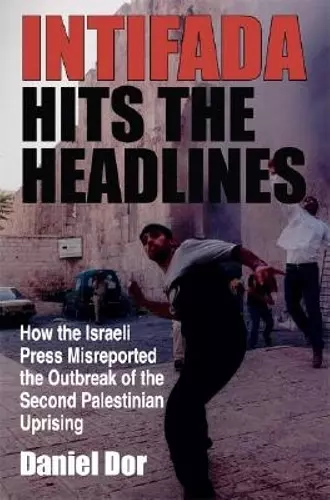Intifada Hits the Headlines
How the Israeli Press Misreported the Outbreak of the Second Palestinian Uprising
Format:Paperback
Publisher:Indiana University Press
Published:18th Feb '04
Currently unavailable, and unfortunately no date known when it will be back

Choice Outstanding Academic Title (2005)
Presenting the study of newspaper reports during the escalation of the second Intifada in the fall of 2000, this title shows how reality is subject to distortion and manipulation by the media. It reveals how newspapers were able to produce and participate in a consensual narrative that ended the peace process.
In this nuanced and detailed study of newspaper reporting during the escalation of the second Intifada in the fall of 2000, Daniel Dor shows how real events are subject to distortion and manipulation by the media. In an analysis of the heart of Israel's media establishment—the newspapers Yediot Ahronot, Ma'ariv, and Ha'aretz—he finds a wide gap between the reality reported by field reporters and the eventual newspaper accounts framed by editors. Led by beliefs, opinions, and emotional responses rather than the facts provided by their reporters, these editors created a platform on which a new and fearful narrative for Israeli–Palestinian relations was built. Yet while Dor demonstrates that the media construct the news rather than simply report it, his sophisticated analysis also shows that no one entity or person is responsible. Rather than a supreme authority, Dor argues, it is the influence of fear, anger, ignorance, and a desire to please and sell newspapers that threatens the freedom of the press in a liberal democracy.
If more studies like Dor's were published, audiences worldwide might recognize how poorly news is reported and written and take measures to resist. Dor (communication, Tel Aviv Univ.) scrutinized the news coverage of the first month (October 2000) of the Intifada in Israel's three largest dailies, Yediot Ahrenot, Ma'ariv, and Ha'aretz. Using ten parameters (positioning, graphic saliency, headline wording, etc.), he analyzed all material; he then interviewed 18 senior editors, reporters, and senior commentators to discover their rationale for what he called a one-sided, partial, censored, and biased picture of reality. His conclusions are shocking yet not surprising, in the context of subsequent coverage of terrorism and the Iraq War. The contrast between what reporters sent in and what was printed was stark. The editors had their own agendas (obtained from television reports), and though they knew far less about the intricacies of the general picture than senior reporters, they adopted the political and military establishment's judgments to prevent friction with the powers-that-be. The result was public-be-damned journalism that presented the conflict in administratively engineered language, loaded-with-blame (placed on Arafat) commentaries, under apocalyptic and hysterical headlines. Similar studies of television news coverage would likely reveal a situation many times worse. Summing Up: Essential. Upper-division undergraduates through faculty and professionals; general readers.October 2004
-- J. A. Lent * Temple UniversiISBN: 9780253216373
Dimensions: unknown
Weight: unknown
200 pages